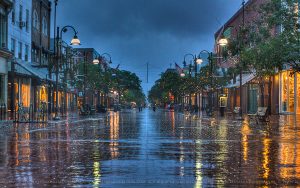Project Goals
For UVM’s Geography course Qualitative Research Methods, five students set out to explore folk geographies on campus and in Burlington. Together with Special Collections, we discovered UVM’s robust history of hauntings and ghost stories. We set out to trace how both ghost stories and actual experiences with ghosts (hauntings), changed over time, space, and between sources. Using archived sources, interviews, and surveys with current students and faculty, we demonstrate that the tradition of passing on a ghost story, experiences of hauntings, and students perceptions of ghosts at UVM varied upon time and the use and/or meaning of the place that is haunted.

Key Research Questions
What are the narratives of ghost stories or hauntings at UVM and in Burlington? How have they changed?
What purposes do ghost stories serve for the UVM community?
How do ghost stories influence one’s perception of and experience in a place?
How does one’s experience in a space influence their belief in ghost stories or perception of a haunting?

Data Collection Methods
- Interviewed UVM students
- Surveyed UVM students and faculty
- Interviewed professional ghost hunters
- Applied scholarly theoretical framework to Burlington area ghost stories
- Listened to / read transcripts of oral histories
- Read newspaper articles from last several decades to see what people were saying about UVM / Burlington ghosts
Analytical and Representative Methods
- Created a StoryMap as an interactive way for viewers to navigate the hauntings in the community
- Created a Timeline JS to trace how the relationship between hauntings/ghost stories, a place, and the observer changes over time
- Developed a case study of the supposed haunting in the Converse Building to represent the manifestation of and attitudes toward UVM’s most infamous ghost, Henry, over the last Century.